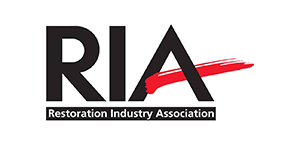Water damage can have a devastating effect on your home and belongings. Whether it’s a burst pipe, flooding, or a leaky roof, the consequences can be far-reaching. Understanding what gets ruined in water damage is crucial for protecting your belongings and taking the necessary precautions.
Key Takeaways:
- Water damage can cause significant harm to your home structure, furnishings, and personal items.
- Structural damage may occur to the foundation, walls, floors, and ceilings due to water infiltration.
- Furniture, upholstery, wooden surfaces, carpets, and rugs are particularly susceptible to ruin from water damage.
- Personal items such as electronics, appliances, important documents, photographs, and sentimental belongings are at risk.
- Preventative measures, such as water leak detection systems, waterproofing, and insurance coverage, can help protect your belongings.
Water Damage and Home Structure
Water damage can have severe consequences for the structure of your home. From the foundation to the walls, floors, and ceilings, no part of your home is immune to potential damage caused by water infiltration.
When water seeps into your foundation, it can lead to structural damage that compromises the stability of your entire home. This can result in cracks, shifting, and foundation failure, which can be costly and time-consuming to repair.
The walls of your home are also vulnerable to water damage. Excessive moisture can cause paint to peel, wallpaper to bubble, and drywall to deteriorate. If left unchecked, it can even lead to the growth of mold and mildew, posing a risk to your health.
Water can penetrate through your floors, causing them to warp, buckle, or become discolored. Additionally, if your home has a crawl space or basement, water damage can result in rotting wood or sagging floors.
One of the least expected areas to sustain water damage is the ceiling. Leaks from above or condensation buildup can lead to stains, sagging, or even collapse if the damage is extensive.
Understanding the potential damage to these vital elements of your home’s structure is paramount. By being aware of the risks, you can take proactive measures to prevent and mitigate water damage.
| Area | Potential Damage |
|---|---|
| Foundation | Cracks, shifting, and failure |
| Walls | Peeling paint, wallpaper bubbling, mold growth |
| Floors | Warped, buckled, or discolored surfaces |
| Ceilings | Stains, sagging, or potential collapse |
Protecting the structural integrity of your home is not only crucial for your safety but also for maintaining its value. Implementing preventative measures and promptly addressing any signs of water damage can save you from costly repairs and ensure the longevity of your home.
Ruined Furnishings from Water Damage
Water damage can have a significant impact on the furnishings in your home. Furniture, upholstery, wooden surfaces, carpets, and rugs are particularly vulnerable to the damaging effects of water. Understanding how water damage can ruin these items is essential for taking prompt action and minimizing potential losses.
Furniture, such as sofas, chairs, and tables, can absorb water quickly, leading to warping, swelling, and discoloration. Upholstered items, like couches and chairs, are especially susceptible to water damage, as moisture can seep deep into the fabric, causing mold and unpleasant odors.
Wooden surfaces, including cabinets, countertops, and flooring, can suffer irreparable damage from water exposure. The excess moisture can cause wood to warp, rot, or develop unsightly stains, compromising both their structural integrity and aesthetic appeal.
Carpets and rugs act as absorbent barriers, soaking up water and becoming breeding grounds for mold and mildew. Once waterlogged, they may develop a foul odor and require extensive cleaning or replacement.
To minimize the damage to your furnishings from water, it’s essential to act quickly and follow these steps:
- Remove any wet items from the affected area to prevent further water absorption.
- Wipe down and dry furniture surfaces using absorbent towels or a wet/dry vacuum cleaner.
- Place wooden furniture on blocks or aluminum foil to prevent contact with wet flooring.
- If possible, elevate upholstered furniture to allow air circulation and expedite drying.
- Use dehumidifiers and fans to dry the area and prevent mold growth.
- Consult professional restoration services for water-damaged carpets and rugs.
Remember, the faster you respond to water damage, the better chance you have of salvaging your furnishings and minimizing the need for costly replacements. Don’t underestimate the destructive power of water and take immediate action to protect your precious belongings.
Impact on Personal Items
Water damage poses a significant threat to your personal items. From electronics to sentimental belongings, the potential ruin can be devastating. To help you safeguard these valuable possessions during a water damage incident, here are some essential tips:
1. Protecting Electronics
Electronics such as smartphones, laptops, and televisions are particularly vulnerable to water damage. To minimize the risk:
- Power off and unplug any affected devices immediately.
- Remove the batteries if possible.
- Wipe off any visible water with a dry cloth.
- Place the electronics in a sealed bag with silica gel packets to absorb moisture.
- Seek professional assistance for thorough drying and repairs.
2. Safeguarding Appliances
Appliances like refrigerators, washing machines, and dishwashers can suffer extensive damage from water infiltration. Follow these steps to protect your appliances:
- Turn off the power supply to the affected appliance.
- Disconnect the appliance from the water source.
- Remove any water or moisture from the appliance’s exterior.
- Consult a professional for inspection and repair.
3. Preserving Important Documents
Water damage can result in the loss of vital documents, such as passports, birth certificates, and financial records. Take these precautions to safeguard your important documents:
- Store important documents in waterproof containers or sealed plastic bags.
- Elevate storage boxes off the ground to prevent water seepage.
- Consider making digital copies of important documents and storing them securely online.
- Contact relevant authorities or institutions to replace damaged documents.
4. Protecting Photographs
Photographs hold cherished memories, but they are delicate and easily damaged by water. To protect your precious photos:
- Remove any moisture by blotting gently with a clean, dry cloth.
- Allow the photographs to air dry in a cool, shaded area.
- Consider digitizing your photo collection to preserve them in case of damage.
- Consult a professional for photo restoration if necessary.
5. Preserving Sentimental Belongings
Sentimental items, such as heirlooms or childhood mementos, often hold immense emotional value. To prevent damage to these treasured possessions:
- Remove any excess water or moisture using a soft cloth.
- Allow sentimental items to air dry naturally.
- Handle fragile items with care to avoid further damage.
- Consult a restoration specialist for professional assistance if needed.
By following these tips, you can increase the chances of preserving your electronics, appliances, documents, photographs, and sentimental items during a water damage incident.
Protecting Your Belongings from Water Damage
Preventing water damage is crucial to safeguarding your belongings. By taking the right preventative measures, you can minimize the risk of ruining your valued possessions. In this section, we will explore some effective strategies, including water leak detection systems, waterproofing techniques, and the importance of insurance coverage.
Water Leak Detection Systems
Installing a water leak detection system is an essential preventative measure that can save you from significant damage and costly repairs. These systems use sensors to detect leaks and alert you before they become major issues. Whether it’s a burst pipe or a faulty appliance, early detection can help you take immediate action and prevent extensive damage to your belongings.
Waterproofing Techniques
Waterproofing your home is another effective method of protecting your belongings from water damage. This process involves applying sealants, coatings, and barriers to vulnerable areas such as basements, roofs, and walls. By creating a waterproof barrier, you can prevent water from seeping into your home and damaging your possessions.
The Importance of Insurance Coverage
While preventative measures can minimize the risk of water damage, it’s essential to have proper insurance coverage to protect your belongings. Homeowner’s insurance typically covers water damage caused by sudden incidents like burst pipes or storms. However, it’s important to review your policy and ensure you have adequate coverage for both structural damage and the replacement or repair of your belongings.
Investing in additional flood insurance is also worth considering, especially if you live in an area prone to flooding. This specialized coverage can provide additional protection for your belongings in the event of a natural disaster or severe water-related incident.
Taking the time to assess your insurance needs and update your coverage can provide peace of mind, knowing that your belongings are protected in the event of water damage.
By implementing these preventative measures, such as water leak detection systems, waterproofing techniques, and proper insurance coverage, you can significantly reduce the risk of water damage and protect your valued belongings.
| Preventative Measures | Advantages |
|---|---|
| Install water leak detection systems | – Early warning for potential leaks – Prompt action to minimize damage |
| Implement waterproofing techniques | – Protects vulnerable areas from water infiltration – Preserves the integrity of your belongings |
| Obtain comprehensive insurance coverage | – Ensures financial protection for repairs or replacements – Peace of mind in case of water damage incidents |
Conclusion
Water damage is a serious threat to both your home and your belongings. Understanding what can get ruined in water damage is essential to taking the right precautions to protect your property. By addressing structural vulnerabilities, safeguarding your furnishings, and securing your personal items, you can significantly reduce the risks associated with water damage.
To protect your home’s structure, it’s important to be proactive. Regularly inspect your foundation, walls, floors, and ceilings for any signs of water infiltration. Promptly fix any leaks or cracks to prevent further damage. Consider investing in waterproofing measures, such as sealants or coatings, to add an extra layer of protection.
When it comes to your furnishings, quick action is key. Remove wet items from the affected area as soon as possible to minimize further damage. Use fans or dehumidifiers to dry out upholstery, wooden surfaces, carpets, and rugs. If necessary, consult professionals who specialize in water damage restoration to ensure proper cleanup and restoration.
Lastly, don’t forget to secure your personal items. Electronics, appliances, important documents, photographs, and sentimental belongings can be deeply affected by water damage. Take preventative measures, such as storing important documents in waterproof containers or backing up digital files, to safeguard your valuables. Additionally, consider obtaining comprehensive insurance coverage that includes protection against water damage.
By staying proactive and prepared, you can significantly reduce the potential ruin caused by water infiltration. Remember, where prevention fails, swift action is necessary. Stay vigilant, address vulnerabilities, and take the necessary steps to protect your home and belongings from the devastating effects of water damage.
FAQ
What aspects of my home are at risk of getting ruined in water damage?
Water damage can affect various aspects of your home, including the structure, furnishings, and personal items.
What kind of damage can water infiltration cause to the home structure?
Water infiltration can lead to structural damage, compromising the foundation, walls, floors, and ceilings of your home.
How does water damage impact furnishings?
Water damage can ruin furniture, upholstery, wooden surfaces, carpets, and rugs in your home.
What personal items are most vulnerable to water damage?
Electronics, appliances, important documents, photographs, and sentimental belongings are at risk of being ruined in water damage incidents.
What preventative measures can I take to protect my belongings from water damage?
You can install water leak detection systems, waterproof vulnerable areas, and ensure you have proper insurance coverage to safeguard your belongings from water damage.

























